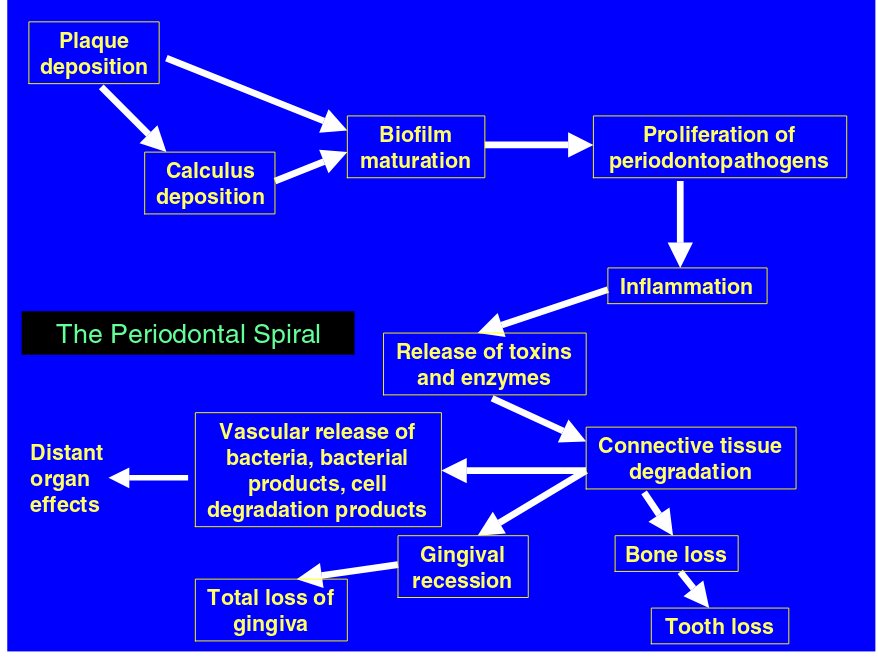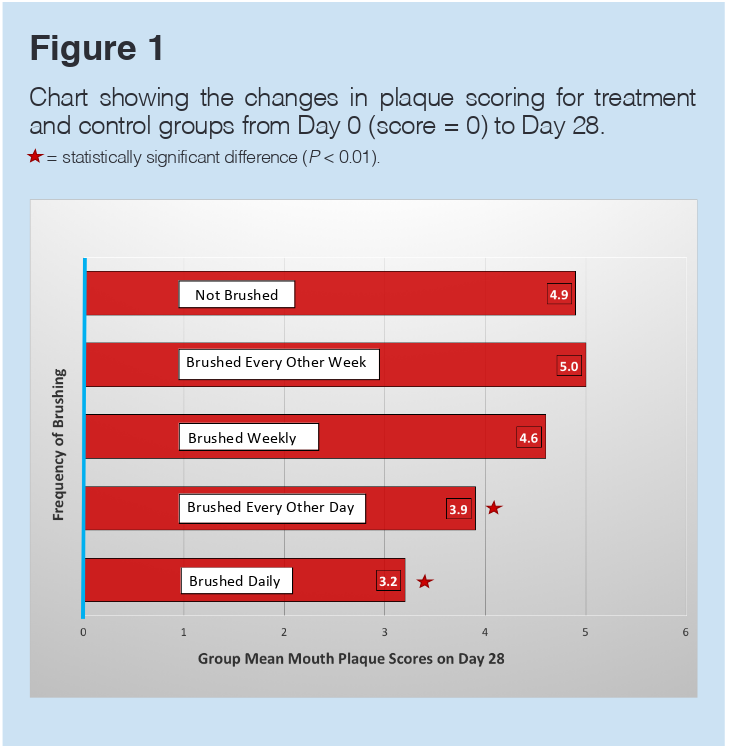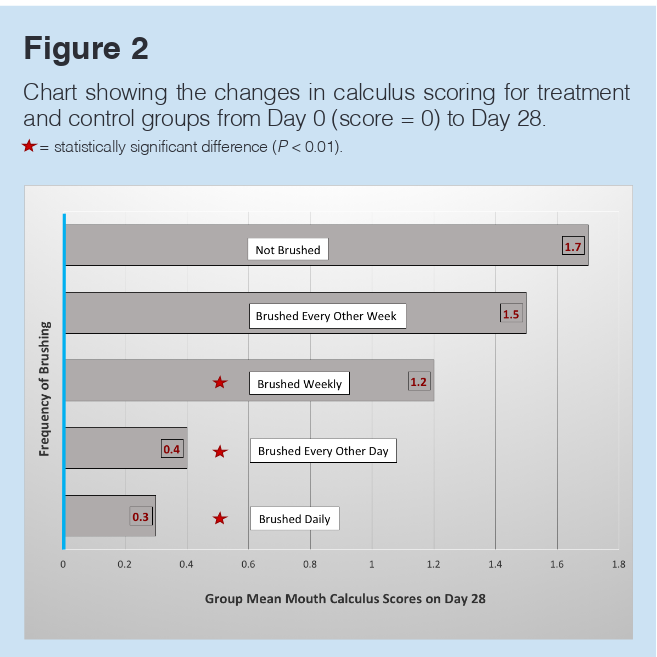Recently I learned that dogs also need to have their teeth brushed, to avoid some nasty health issues. Here’s my current understanding on why dog oral hygienic practices are valuable.
1 -
The main goal of tooth-brushing in dogs is to avoid periodontitis, a severe gum infection that can lead to tooth loss and other serious health complications, including
(…) histologic changes in renal glomeruli and interstitium, heart and blood vessel lesions, hepatic inflammation, respiratory tract bacteria, low birth weight offspring, and early death (From Prevention of Periodontal Disease)
Periodontitis will develop in the absence of tooth-brushing. It starts with the formation of dental plaque, a biofilm of microorganisms, in the surface of teeth. In addition, the teeth can get mineralized by calcium salts present in saliva - people call this calculus or tartar.1 2 The calculus “provides a protected physical location for development of plaque, including deep crevices that promote growth of anaerobic bacteria” (Management of periodontal disease: understanding the options). The biofilm continues to develop and its interaction with the immune system can lead to a downward spiral of gingival inflammation and breakdown of the integrity of the connective tissue which can eventually lead to the nasty issues quoted above. The ideia here is that the damage to the tissues can lead to bacteria entering the bloodstream, getting to other parts of the body.

From Management of periodontal disease: understanding the options
So, what we want is to keep the dental plaque in check and avoid the development of tartar so that we never get to periodontitis. In other words, looking at the diagram above, we want to slow down the processes described by the arrows going from “Plaque deposition” to “Biofilm maturation” and to “Calculus deposition”. We can do this by brushing the dog’s teeth frequently. How frequently?
2 -
I went through a bunch of papers and abstracts and the consensus seems to be that daily is the best option.
For example, Effect of Frequency of Brushing Teeth on Plaque and Calculus Accumulation, and Gingivitis in Dogs in a really thorough, although short, study found that there’s even a difference between brushing every day and doing it every other day.

From Effect of Frequency of Brushing Teeth on Plaque and Calculus Accumulation, and Gingivitis in Dogs

From Effect of Frequency of Brushing Teeth on Plaque and Calculus Accumulation, and Gingivitis in Dogs
The study had the duration of only one month, but considering the cumulative nature of the issues that might arise, I think its safe to extrapolate to the future.
Other studies I’ve checked:
- Tooth brushing inhibits oral bacteria in dogs - Finds that oral bacteria count diminishes with tooth brushing.
- Plaque induced periodontal disease in beagle dogs
It was also demonstrated that dogs subjected to meticulous plaque control over a 4-year period did not exhibit clinical, roentgenographical and histological signs of periodontal tissue destruction. On the other band, dogs which freely accumulated plaque rapidly developed signs of gingivitis and eventually also clinical, radiographical and histopathological signs of periodontal tissue breakdown
- Experimental gingivitis and frequency of tooth brushing in the beagle dog model. Clinical findings
The present study demonstrated that only by brushing every day can clinically healthy gingivae be obtained in the beagle dog model with experimental gingivitis at baseline.
- The Role of Tooth-brushing and Diet in the Maintenance of Periodontal Health in Dogs
Daily tooth-brushing should be the recommendation to dog owner irrespective of dietary regimen. Providing a dental hygiene chew daily seems to give an added health benefit when tooth-brushing is less frequent, and provides the pet owner with a useful adjunct for homecare.
3 -
Something that surprised me was that only the last of the 5 papers I mentioned above used toothpaste. And I haven’t found anything comparing tooth-brushing without vs. with toothpaste. Considering this, is there any reason why I would want to use toothpaste?
a) Flavouring - To make it a nice experience for dogs. But you don’t need a toothpaste for this, really - I’m currently using small amounts of coconut oil for this effect.
b) Abrasive - To help with the removal of plaque.
c) Fluoride? - This is actually not necessary for dogs since their are less likely to develop cavities. From Can Dogs Get Cavities?:
One of the main reasons that dogs are less likely to develop cavities than we are is down to their diet. Your furbaby will undoubtedly consume far less food that is high in sugar or acid, which are the main culprits in human tooth decay. Their dental anatomy helps too. Dog teeth are pointy rather than flat, and this gives the bacteria less space to thrive.
From these, fluoride is not needed and flavouring can easily be homemade. Abrasive might make sense and I would consider using a toothpaste that would contain some kind of it and not much else. I went through some of the dog toothpastes easily available here in Portugal:
Beaphar - Doesn’t list ingredients
Arm & Hammer - Contains baking soda, which might be problematic. From Prevention of Periodontal Disease:
Salt and baking soda are gingival irritants, are not recommended, and have been shown to have no advantage over abrasive-only dentifrice.
Rest of ingredients seem to be for flavouring and preservation.
Orozime - Doesn’t properly list ingredients
Flamingo - Contains sweeteners and, considering that my dog will definitely swallow the toothpaste, I’m not happy exposing her to sweeteners. 3
So, not being happy with any of the available toothpastes, I’ll experiment with using none, just adding some flavouring to give positive feedback to my dog.
From Management of periodontal disease: understanding the options
↩︎Calcium salts are more likely to be deposited on plaque in an alkaline environment. Unfortunately, the mouths of dogs and cats are slightly alkaline (oral fluid in human beings is usually slightly acidic). Thus, dogs and cats are more prone to deposition of calculus than people.
This layer is really difficult to remove and it is recommended that it should be done in a veterinary, under anesthesia. Anesthesia can be dangerous so definitely something to avoid. ↩︎
I don’t have one great source for the claim that one shouldn’t give dogs sweeteners. My reticence comes from the many videos of NutritionFacts.org on sweeteners. ↩︎
